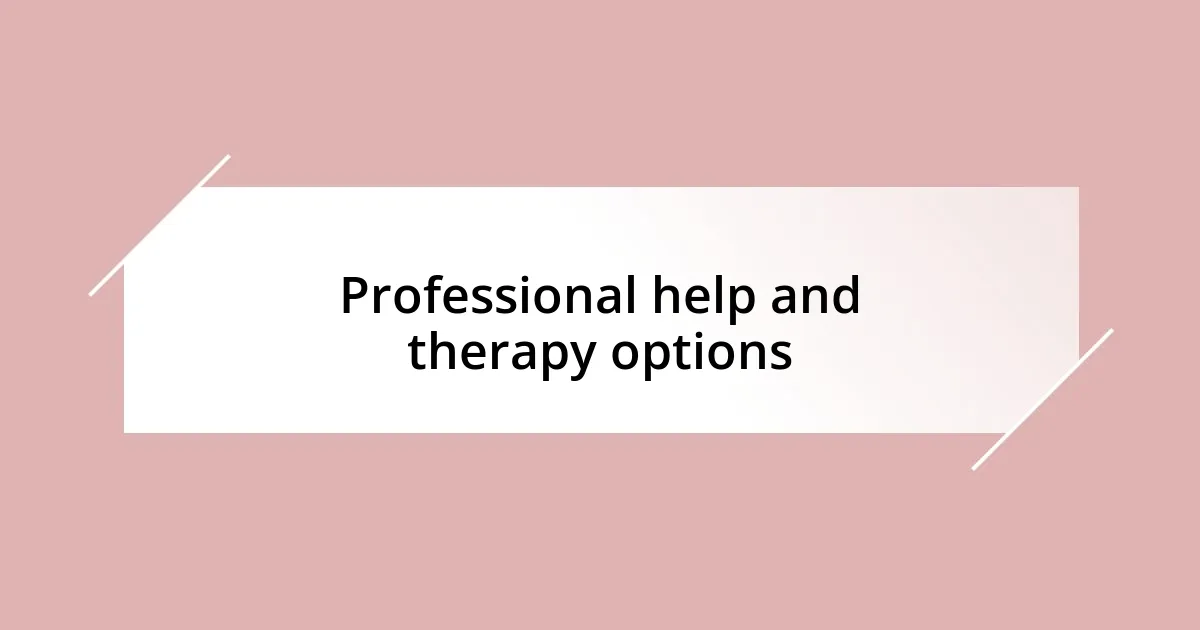Key takeaways:
- Personal crises, while painful, can lead to growth and strengthened relationships through shared experiences.
- Recognizing signs of distress—such as mood changes and withdrawal—allows for better support for ourselves and others.
- Developing a support network of friends, family, and professionals provides emotional balance and perspective during difficult times.
- Implementing self-care routines and long-term resilience strategies, like journaling and maintaining a growth mindset, fosters coping and recovery.

Understanding personal crises
Personal crises are often unexpected, throwing our lives into turmoil. I remember a time when a sudden job loss left me questioning not only my career path but my self-worth. Have you ever felt like the ground beneath you just disappeared?
These experiences are unique to each individual, yet they share common threads of confusion and vulnerability. During my own struggles, I often found myself asking, “Why is this happening to me?” Such self-questioning can amplify feelings of isolation, making it hard to see a way forward.
Understanding personal crises means recognizing that they can serve as pivotal moments for growth, even when they’re incredibly painful. I learned to search for silver linings during dark times—like the friendships I strengthened through sharing my experiences. What lessons have you discovered through your own crises?

Recognizing signs of distress
Recognizing signs of distress in ourselves and others is crucial, especially during times of crisis. For instance, I once noticed a close friend withdrawing from our usual hangouts. Initially, I brushed it off as a busy schedule, but I soon realized that this change indicated deeper emotional struggles. Being aware of these signs can help us connect with those who might be silently suffering.
Here are some common signs of distress to look out for:
- Changes in mood, such as increased irritability or sadness
- Withdrawal from social interactions or activities once enjoyed
- Overwhelming fatigue or loss of interest in daily tasks
- Difficulty concentrating or making decisions
- Changes in eating or sleeping patterns, like insomnia or overeating
Identifying these signs can be a lifeline for someone in distress, just as it was for me when I recognized my own unhealthy coping mechanisms during a stressful period.

Developing a support network
Developing a support network has been a game-changer during my personal struggles. In one of my most challenging times, I reached out to friends and family, only to discover they were more than willing to lend a listening ear. I realized that vulnerability can build intimacy; sharing my fears fostered deeper connections. Have you ever thought about how sharing can lighten a heavy burden?
Finding the right people to include in your support network is essential. I often consider this network like a safety net—some are close friends, while others could be acquaintances or even professionals like counselors. Each plays a unique role in my emotional well-being. It’s fascinating how just one conversation with the right person can offer perspective and comfort, reminding us that we’re not alone in our struggles.
Moreover, it’s important to actively nurture these relationships. I learned that regularly checking in with my support network cultivates a stronger bond. Whether it’s a simple message or a coffee catch-up, these moments remind me that support is a two-way street. Who do you cherish in your life that brightens those tough moments?
| Support Network Component | Benefits |
|---|---|
| Close Friends | Provide emotional support and understanding |
| Family | Offer unconditional love and guidance |
| Professional Help | Give expert advice and coping strategies |
| Community Groups | Facilitate peer support and shared experiences |

Practical coping strategies to implement
When facing a personal crisis, I found that establishing a daily routine provided comfort and structure. I remember a period when everything felt chaotic; implementing a simple schedule helped ground me. Each morning, I made it a point to wake up at the same time, exercise a bit, and even enjoy a cup of tea. This small act of consistency reminded me that I still had control over my day, even when other parts of my life felt out of balance.
Mindfulness and deep breathing techniques also played a significant role in my coping toolbox. During high-stress moments, I’d pause, close my eyes, and focus on my breath. Have you ever noticed how just a few deep breaths can shift your mindset? This grounding technique not only alleviated my immediate anxiety but also centered my thoughts, allowing me to respond more thoughtfully to challenges rather than reacting impulsively. I realized that taking just five minutes to reconnect with myself could essentially change the course of my day.
Lastly, journaling became an indispensable outlet for me. I’d write down my thoughts and feelings, which helped clarify my emotions. It’s astonishing how putting pen to paper can declutter a racing mind. I often look back at my entries, reflecting on my growth and resilience. Have you ever tried journaling? I’ve found it to be a powerful tool for self-discovery, helping me articulate my struggles and celebrate my wins, no matter how small.

Professional help and therapy options
Seeking professional help and exploring therapy options can be transformative. I remember the first time I sat down with a therapist. It felt like opening a door to a room I didn’t know existed—full of tools and insights that guided me through my confusion. It’s remarkable how someone trained to listen can illuminate paths I hadn’t considered before. Have you ever thought about how a neutral perspective can shift your understanding of a situation?
Therapy comes in many forms, from cognitive-behavioral therapy (CBT) to mindfulness-based approaches. Each method offers unique strategies to tackle the challenges we face. I found CBT particularly helpful because it focused on changing negative patterns in my thinking. It’s like having a mental toolbox, where I could pull out different tools to cope with life’s ups and downs. Have you ever tried a specific therapeutic approach that resonated with you?
Additionally, exploring support groups provided me with a sense of community during my toughest moments. I vividly recall attending my first session, heart racing with apprehension. But sharing my story alongside others in similar situations was both comforting and empowering. It turns out that the collective experience often creates bonds that deepen our understanding of ourselves and one another. Isn’t it incredible how knowing others share your struggles can make the burden feel lighter?

Self-care routines during crises
Establishing self-care routines during a crisis has been an essential lifeline for me. For instance, I found that setting aside just a few minutes each day for a calming ritual—like listening to my favorite music—could drastically shift my mood. It’s amazing how a simple melody can transport you, even if just for a moment, away from your worries. Have you ever noticed how music can evoke emotions you didn’t even realize were buried?
I also discovered the power of nature during tough times. Whenever I felt overwhelmed, stepping outside for a brief walk became my go-to remedy. I remember one particularly distressing day when the fresh air and sounds of chirping birds cleared my mind like a refreshing reset button. It’s fascinating how grounding ourselves in our environment can create space for new perspectives. Have you experienced that feeling when nature envelops you, making everything seem a bit more bearable?
Lastly, I turned to creative outlets as a form of self-care. Painting or crafting allowed me to express emotions that were otherwise difficult to articulate. One evening, with a brush in hand and colors swirling, I lost myself in the process, feeling a mix of serenity and joy. I often wonder: why is it that creativity can be so healing? It’s as if creating something tangible from chaos offers a sense of clarity and hope, a reminder that even in times of crisis, beauty can emerge.

Long-term resilience building techniques
Building long-term resilience requires active and intentional practices. I started journaling during my most challenging periods, pouring out my thoughts and feelings onto the page. It was as if I was having a candid conversation with myself, helping me to untangle emotions that seemed overwhelming. Have you ever put your feelings into words and felt that weight lift, even just a little?
Another technique that has resonated deeply with me is the development of a growth mindset. Adopting the belief that challenges are opportunities for learning truly transformed my approach to setbacks. I remember facing a significant failure at work; instead of wallowing, I asked myself, “What can I learn from this experience?” That simple shift in perspective allowed me to uncover valuable lessons, which ultimately fueled my future successes. Isn’t it powerful how reframing our thoughts can alter our entire outlook?
Finally, nurturing strong relationships contributed significantly to my resilience. I made a conscious effort to surround myself with supportive friends who uplift and inspire me. I’ll never forget a particularly tough night when a close friend listened to me vent without judgment. Their presence grounded me, reminding me that I didn’t have to navigate my crises alone. Have you noticed how the right company can instill a sense of hope? Creating this network of support feels like building a safety net, ready to catch me whenever life gets tough.












